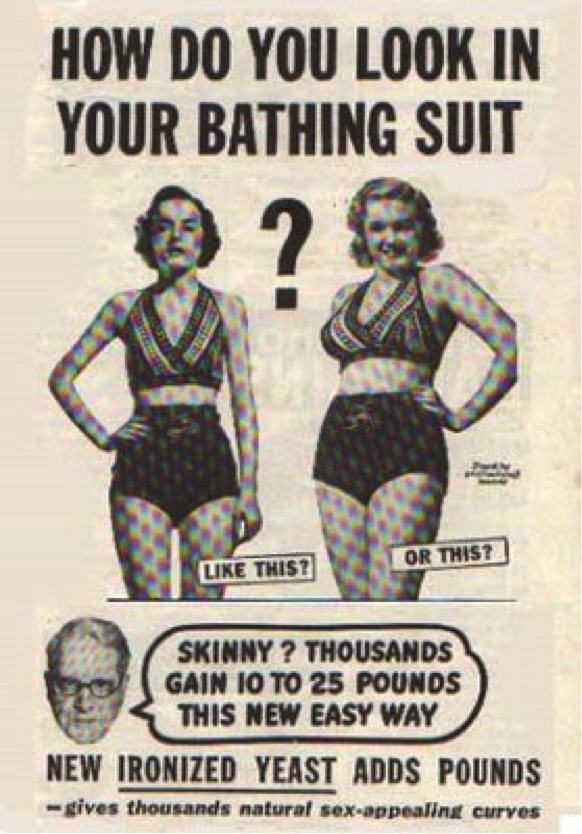
Something that came to my attention when I came across Marcella Raimondo’s Indiegogo pitch on Multicultural issues with eating disorders is that we as a society tend to conceptualize eating disorders as only affecting affluent Caucasian females. It is true that eating disorders disproportionately affect females over males 2 to 1. However, eating disorders such as anorexia nervosa, bulimia nervosa, and binge eating disorder (among others) don’t discriminate against race, sexual orientation, cultural background, or socioeconomic standing. In fact, according to the Eating Disorders Coalition, of all the factors that determine who develops an eating disorder, 50- 80% of those factors are genetic. As for societal influence, when women and men of all races try to adhere to a specific culturally ideal body shape, the likelihood of developing an eating disorder will increase, although this ideal body shape may vary for different racial groups. Studies have shown that “because of increasing global acceptance of dominant white socio-cultural values regarding body weight and image, increasingly more …cultural groups are developing greater dissatisfaction with their weight (Grogan, S., 1999).”
This misconception and stereotyping of the cross-cultural prevalence of eating disorders often lends to disorders not being screened or treated in certain multicultural populations. “Multicultural populations were also significantly less likely than Caucasians to have been asked by a doctor about eating disorder symptoms (Becker,A; et.al. 2003).”This is a serious flaw in our health care system that we are overlooking certain ethnic groups as potential carriers of these disorders. We as a society need to shed a light on these minority groups and make sure that they are receiving equal access to educational and treatment programs as everyone else. In the future, this could mean incorporating discussion of eating disorders into health class curriculum in schools and requiring doctors to consider eating disorders for patients of all backgrounds.



